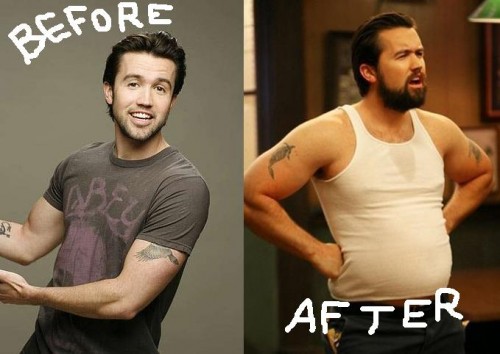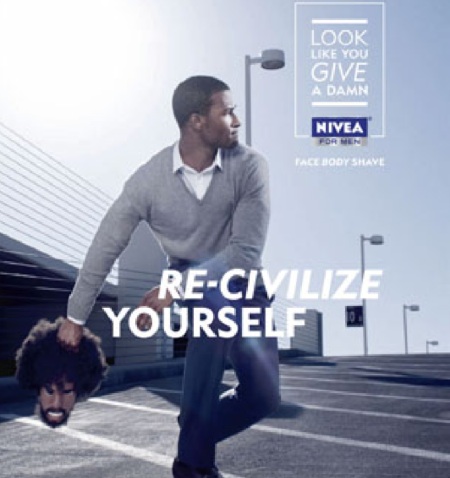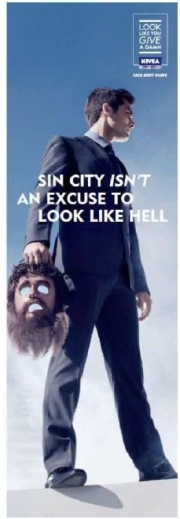I am a huge fan of the television series It’s Always Sunny in Philadelphia, but I want to problematize some of the humor we often take for granted in the show. In a recent interview with Conan O’Brien, Charlie Day discusses some of the changes introduced into the upcoming season of the show. Specifically, about 1:30 in, they discuss the weight gain that Rob McElhenney (“Fat Mac”) accomplished in pursuit of a “funnier” character (image via):
Notice how Charlie Day and Conan laugh—freely and unapologetically—at the prospect of Mac contracting diabetes (especially Conan’s mocking “Go America!” response to the image of “Fat Mac”):
Continue watching the interview to the 4:45 mark; Conan broaches the topic of mental retardation contained in an earlier episode (Season 3 Episode 9: “Sweet Dee’s Dating a Retarded Person”). You will notice that Charlie Day seems more hesitant and calculated in discussing the topic of mental disability. For one, he uses the word “mental disability” rather than the more pejorative “retarded.” You will also notice less of an audience response, a less raucous reaction to the prospect of someone being mentally disabled than to them being fat.
Mental disability, as a largely ascribed status, serves as a less-viable source of humor. That is, laughing at someone who is born a particular way, or gains that status for reasons beyond their control, violates our precepts of political correctness. However, being overweight is often interpreted as caused by a personal character flaw (laziness, gluttony, etc.) and therefore an achieved status. Laughing at fat people, then, is not only socially acceptable, but often encouraged in American comedy.
This highlights the centrality of individualism and personal responsibility in American society. We hold the obese and the overweight accountable for their corporeal deviations. We tend to believe that those who are overweight (and those who contract Type 2 Diabetes) are responsible for their conditions. It then becomes socially acceptable to mock them. On the flipside, mental disability, as an ascribed status, is more likely to be defined as “off limits” as a source of humor. When it becomes a source of humor, as in this case, comedians must save face by saying things like “Nothing against the mentally disabled, but…” as Charlie does at the 5:25 mark—a form of hedging he didn’t feel obliged to include when laughing at someone’s weight.
Who we can laugh at, and whether we have to apologize for doing so, reveals larger cultural discourses, and analyzing humor allows us to understand some of the prevailing moral assumptions we take for granted.
———-
David Paul Strohecker (@dpsFTW) is getting his PhD from the University of Maryland, College Park. He studies issues of intersectionality, consumption, and popular culture. He is currently doing work on the popularization of tattooing, a project on the revolutionary pedagogy of public sociology, and more theoretical work on zombie films as a vehicle for expressing social and cultural anxieties. He previously wrote for the blog Racism Review and currently blogs at Cyborgology.
If you would like to write a post for Sociological Images, please see our Guidelines for Guest Bloggers.









